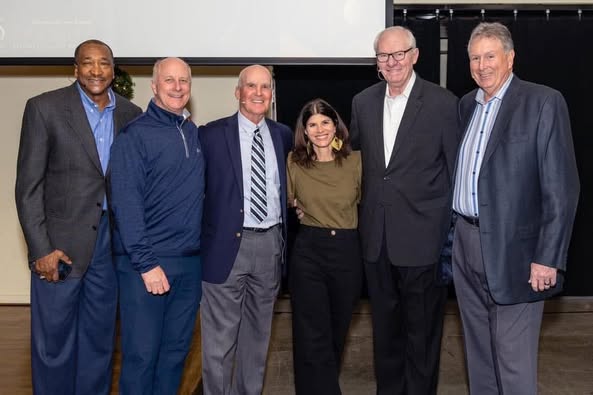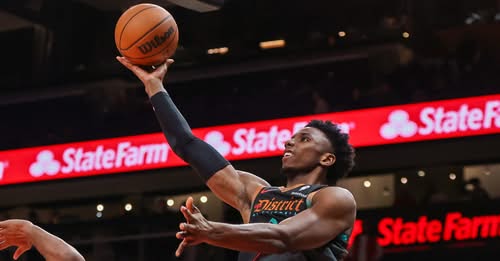Edmonton’s Beau Akey Back on Track After Overcoming Major Shoulder Injury, Eyes Professional Hockey Success
Beau Akey, a promising professional hockey player from Edmonton, is feeling revitalized and optimistic about his career trajectory after overcoming a significant shoulder injury that sidelined him for much of the past two seasons. The journey back to full health and competitive form has been arduous, marked by intense rehabilitation, mental resilience, and an unwavering commitment to his hockey ambitions. Now, Akey is ready to reassert himself in the professional ranks, confident that the setbacks he endured have only strengthened his resolve and sharpened his focus on achieving success at the highest levels of the sport.
Injuries are an unfortunate but inevitable part of any athlete’s career, and for Akey, the shoulder injury represented one of the most challenging obstacles he has faced. The nature of hockey—with its high-speed collisions, physicality, and demands on upper-body strength—means that shoulder injuries can severely impact a player’s ability to perform. For two seasons, Akey grappled not only with the physical limitations but also the psychological hurdles that accompany prolonged recovery periods. Despite these challenges, his determination to return stronger never wavered, underscoring his passion for the game and belief in his potential.
Akey’s road to recovery involved extensive medical treatment and rehabilitation protocols designed to restore full mobility, strength, and confidence in his shoulder. This process demanded rigorous daily workouts, therapy sessions, and a steadfast adherence to recovery plans prescribed by medical professionals and trainers. Beyond the physical aspect, Akey also focused on mental conditioning, working to maintain a positive mindset and the competitive edge essential for professional athletes. His support system—including family, coaches, and teammates—played a crucial role in sustaining his motivation throughout this difficult period.
Returning to the ice after such a significant injury required Akey to rebuild not just his physical capabilities but also his on-ice instincts and timing. Hockey is a game of split-second decisions and fluid motion, and any disruption to a player’s physical harmony can affect performance. Recognizing this, Akey dedicated himself to regaining his sharpness through targeted skill development and game simulations. His coaches have noted his progress with optimism, highlighting his improved mobility and willingness to engage physically, traits essential for excelling in professional hockey’s demanding environment.
Edmonton’s hockey community has closely followed Akey’s comeback, viewing it as a testament to the resilience and dedication inherent in local athletes. Fans and supporters appreciate not only his talent but also the grit he has demonstrated in overcoming adversity. This narrative of perseverance resonates strongly in a city passionate about hockey, where stories of triumph against the odds inspire both current players and aspiring youth. Akey’s journey adds to Edmonton’s rich tapestry of hockey history and underscores the city’s role in developing athletes capable of competing at elite levels.
The timing of Akey’s resurgence could not be better for both the player and the teams eyeing his potential. As professional hockey leagues gear up for upcoming seasons, organizations are seeking players who combine skill with determination and resilience—qualities that Akey embodies. His recent return to form positions him as an attractive candidate for teams looking to deepen their rosters with players who bring both talent and experience navigating adversity. Scouts and managers have taken notice of Akey’s physical readiness and mental toughness, seeing him as a player ready to contribute meaningfully on the ice.
Akey himself remains focused on the future, setting clear goals for the next phases of his career. His immediate objective is to secure a stable role within a professional team, demonstrating consistency and impact in his gameplay. Long-term, he aspires to reach the highest echelons of the sport, continually improving his skills and adapting to the evolving demands of professional hockey. His renewed confidence and physical health provide a solid foundation on which to build these ambitions, and he approaches each game and practice with a mindset geared toward growth and excellence.
The story of Beau Akey’s comeback also highlights the broader themes prevalent in professional sports today: the importance of comprehensive injury management, the role of mental health in athlete recovery, and the significance of support networks. Modern sports medicine and rehabilitation techniques have advanced significantly, enabling athletes like Akey to recover from injuries that might have once ended careers prematurely. However, equally vital are the psychological and emotional components of healing, which require empathy, encouragement, and strategic mental conditioning. Akey’s experience illustrates how combining these elements can lead to successful returns to competition.
From an organizational perspective, Edmonton-area teams and hockey programs have expressed pride in Akey’s determination and progress. His journey serves as an example for younger players navigating the challenges of competitive sports, emphasizing that setbacks can be overcome with patience, hard work, and resilience. Coaches highlight his professionalism and attitude as qualities that enhance team culture and inspire those around him. As Akey continues to prove his readiness, he not only advances his own career but also contributes positively to the broader hockey community’s spirit and aspirations.
In practical terms, Akey’s return to form means the Oilers organization and affiliated teams can count on a player who understands the rigors of professional hockey and has demonstrated the ability to recover and adapt. His physical conditioning and skill set align with the demands of high-level competition, making him a viable option for various roles on the roster. Whether contributing on special teams, providing depth scoring, or adding physical presence, Akey’s versatility and work ethic increase his value to the team. The coaching staff appreciates players who can bring more than just talent—those who embody grit, determination, and team-first attitudes—and Akey fits this mold.
Looking ahead, Akey remains aware that maintaining his health and peak performance will require ongoing dedication. Professional hockey’s physical toll is unrelenting, and players must continually manage conditioning, injury prevention, and recovery to sustain success. Akey has embraced this reality, adopting training routines and lifestyle choices that prioritize longevity and resilience. His experiences with injury have instilled a greater appreciation for physical well-being and the importance of listening to his body. This mature approach bodes well for his continued growth and contributions at the professional level.
In conclusion, Beau Akey’s journey from a significant shoulder injury two seasons ago to a hopeful return to professional hockey epitomizes resilience, dedication, and passion. His successful rehabilitation and renewed physical capabilities have reignited his career ambitions and positioned him as a promising contributor to Edmonton’s hockey landscape. Akey’s story resonates beyond the ice, offering inspiration to athletes facing adversity and underscoring the importance of comprehensive recovery strategies. As he steps back into competitive play, Edmonton and the hockey world alike will be watching with anticipation, rooting for a player who has fought hard to reclaim his path and continue pursuing his professional dreams.



